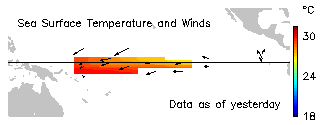 Every problem can be turned into a solution. Most with technologies that exist today. Only we need to DECIDE / ACT FAST.
Every problem can be turned into a solution. Most with technologies that exist today. Only we need to DECIDE / ACT FAST.
Ok, let's name two problems here to illustrate how this works. One is quite old, but no one so far cared to give it a policy focus with teeth. The other is so new, it seems even the UN have not considered yet.
About the rate of change
http://www.cicero.uio.no/fulltext/index_e.aspx?id=5690
Hydro-power is methane emitter unless ...
http://www.planetark.org/dailynewsstory.cfm/newsid/44533/story.htm
Before listing them in more detail here, one thing needs an early highlight:
Problems - and solutions - come up so fast these days that the bureaucratic never-ending procedures of all kinds of panels, UN blessing, scientists back-forth throwing the ball etc etc needs a bit of speeding up.
Why, you aks? The first problem I list will answer it amply: -
It is not just the change of temperature that matters, but equally, the rate of that change.
Average emperature may only increase a couple of degrees and so is our target for the containment of a potentially harmful increase. As an example, we set a target of say 2 °C increase over a long-term. But that is just the first part of the story even if we reach that target. We also need to set targets for the rate of increase. Too fast a change, and side effects will all but eat up the benefits of contained overall temperature target. Animals may adapt faster. But plants are slow adapters as they cannot move away to favorable climate. They need to replant themselves first. But that very slowness can actually limit the possible rate of change to target.
1. Rate of change limit to sustain ecosystems
A convincing
study by Leemans and Eickhout back in 2004 found that forests ability to migrate to stay within the climate zone they are thus adapted to is limited. The
critical limit seems to be 0.4 °C per decade. If the rate should exceed that rate, this relatively old but remarkably important study predicts that all ecosystems will be quickly destroyed. In their wake opportunistic species will start dominating (mostly weeds I assume.) The breakdown of biological material will lead to even greater CO2 emissions. This will in turn
increase the rate of warming undoing all the benefits the limited targeted rise would otherwise bring.
Currently, the Intergovernmental Panel on Climate Change (IPCC) says that
global average temperature is already increasing by 0.2 °C per decade. That rate cannot rise without consequences and all policy should target a limit change
frozen at that rate, lest we will get close to destroying all ecosystems
EVEN if we manage to contain the amount of INCREASE.
THE CRITICAL TIME PERIOD IN THIS IS THE NEXT FEW DECADES, as fastest changes could occur around that time.
THE FOCUS IN THIS should be the
short-lived greenhouse gases – such as methane and tropospheric ozone – and particles with a warming effect, such as soot (black carbon).
2. Shallow Dams, Hydro-power Plants. New design
After a new focus comes on an old problem comes a brand new problem. It is about methane emissions (much more potent heat trappers than CO2) that shallow dams feeding hydro-powers create.Now dams are not natural lakes with their own ecosystem braking down methane to CO2. NEW dams cover rotting plants that emit vast amount of methane trapped in water under normal circumstances. But when that water passes through the turbine of a hydro-power plant gas fizzes out like bubbles do when you open a soft drink.
According to Ivan Lima, National Institute for Space Research, Brazil: - Dams worldwide could generate the equivalent of one-fifth of methane from
ALL OTHER sources. In particular, brand new tropical shallow dams can be most harmful if they are linked to hydro-power plants.
But new problems, if tackled fast enough can bring up brand new solutions. Let's take the world's shallow dams. They produce
MORE methane per unit of power than some fossil-fuel burning options, say many scientists. But what if we trap the methane that fizzes out; - And not only contain it but use it to generate
MORE power?
Methane is the main component of natural gas and Lima estimates that in China alone (the most ambitious hydro-power builder by far) around 2.6 million tonnes could be collected from dams for additional power generation, or the equivalent of over seven months of natural gas imports.
All we need is change the design of dams and the way they are linked to hydro-stations to minimize methane emissions on one hand but also to trap the rest for power. The technology exists to do both, Lima says.
It would provide countries with more cheap and clean energy instead of a global warming burden.
So again, it doesn't matter if the problem is new or old, solutions should come FAST so that the result can be
MORE CHEAP & CLEAN ENERGY WITH TECHNOLOGIES THAT EXIST TODAY.
In summary- The target rate of temperature change should be limited, not just the amount of change
- The next few decades will be critical for all ecological systems to survive
- Shallow dams and hydro-power plants urgently need new design



















